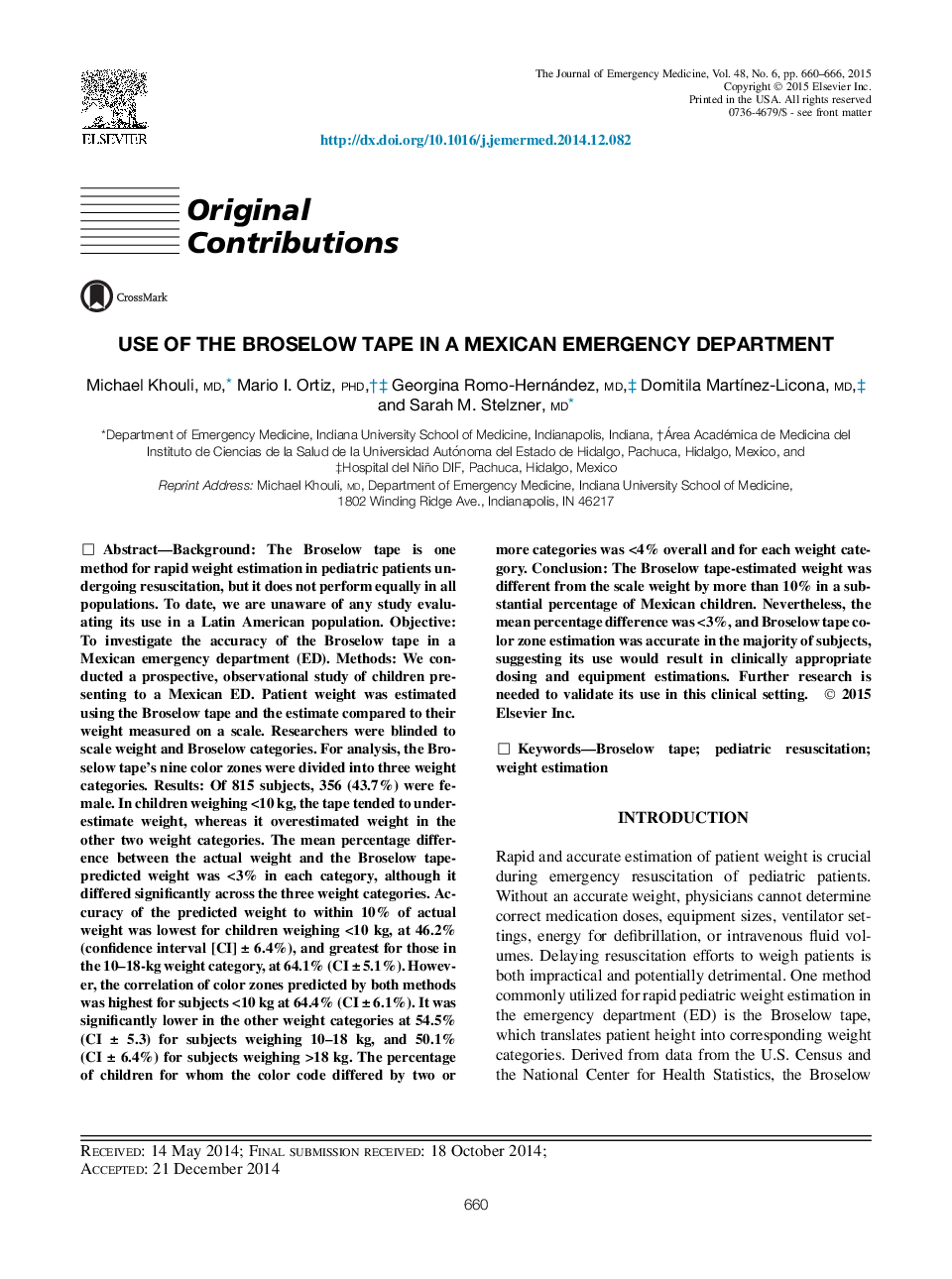| Article ID | Journal | Published Year | Pages | File Type |
|---|---|---|---|---|
| 3246659 | The Journal of Emergency Medicine | 2015 | 7 Pages |
BackgroundThe Broselow tape is one method for rapid weight estimation in pediatric patients undergoing resuscitation, but it does not perform equally in all populations. To date, we are unaware of any study evaluating its use in a Latin American population.ObjectiveTo investigate the accuracy of the Broselow tape in a Mexican emergency department (ED).MethodsWe conducted a prospective, observational study of children presenting to a Mexican ED. Patient weight was estimated using the Broselow tape and the estimate compared to their weight measured on a scale. Researchers were blinded to scale weight and Broselow categories. For analysis, the Broselow tape's nine color zones were divided into three weight categories.ResultsOf 815 subjects, 356 (43.7%) were female. In children weighing <10 kg, the tape tended to underestimate weight, whereas it overestimated weight in the other two weight categories. The mean percentage difference between the actual weight and the Broselow tape-predicted weight was <3% in each category, although it differed significantly across the three weight categories. Accuracy of the predicted weight to within 10% of actual weight was lowest for children weighing <10 kg, at 46.2% (confidence interval [CI] ± 6.4%), and greatest for those in the 10–18-kg weight category, at 64.1% (CI ± 5.1%). However, the correlation of color zones predicted by both methods was highest for subjects <10 kg at 64.4% (CI ± 6.1%). It was significantly lower in the other weight categories at 54.5% (CI ± 5.3) for subjects weighing 10–18 kg, and 50.1% (CI ± 6.4%) for subjects weighing >18 kg. The percentage of children for whom the color code differed by two or more categories was <4% overall and for each weight category.ConclusionThe Broselow tape-estimated weight was different from the scale weight by more than 10% in a substantial percentage of Mexican children. Nevertheless, the mean percentage difference was <3%, and Broselow tape color zone estimation was accurate in the majority of subjects, suggesting its use would result in clinically appropriate dosing and equipment estimations. Further research is needed to validate its use in this clinical setting.
